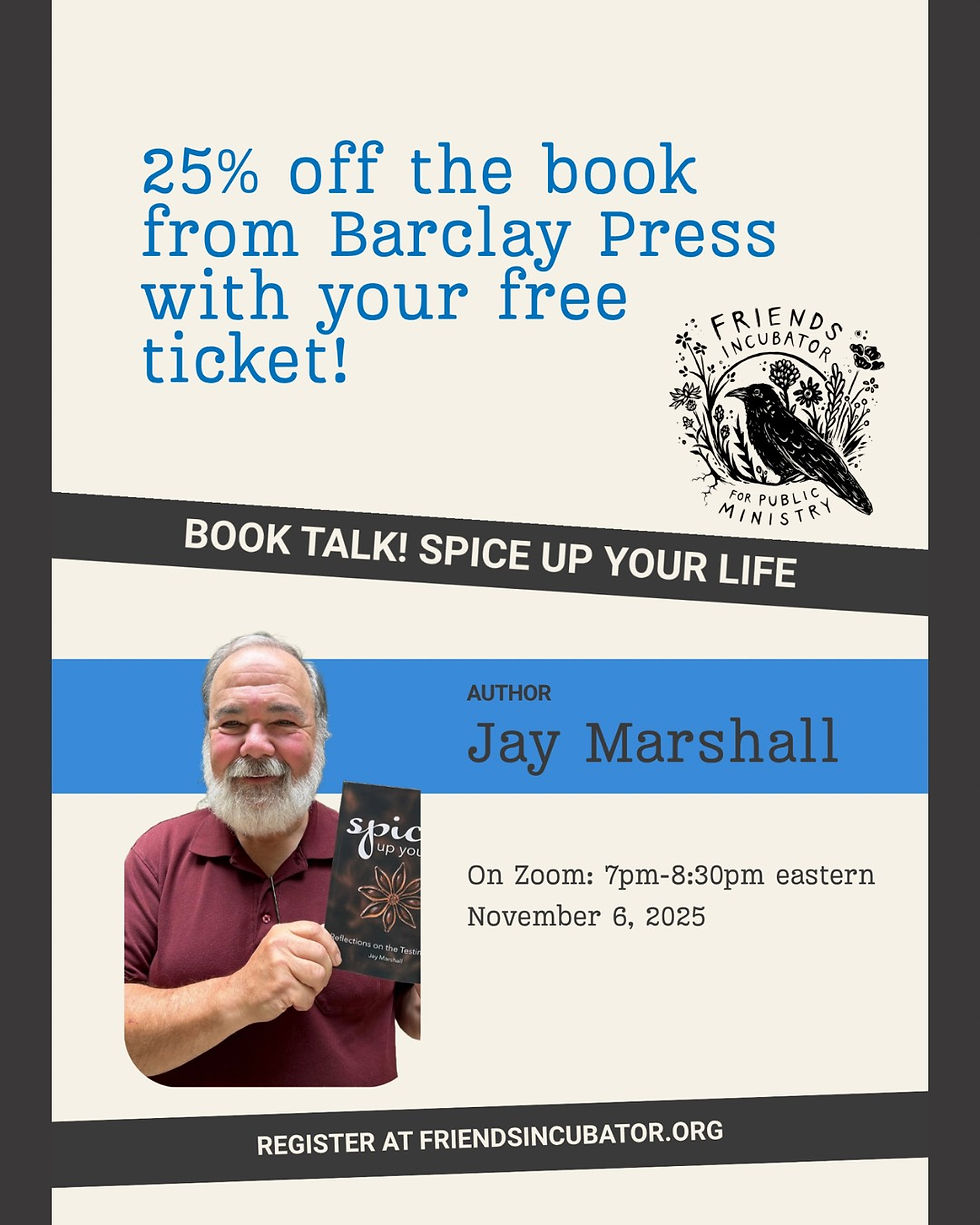Friends Traveling in the Ministry: A Lifeblood of Quaker Community
- windycooler

- May 13
- 3 min read

This is a guest post by Brian Drayton
In the long arc of our Quaker tradition, few practices have been as consistent, dynamic, and quietly revolutionary as traveling in the ministry. As I will share on May 21st, there are three core reflections I’d like to offer about this enduring practice—one that continues to shape, challenge, and revive our life together as Friends.
1. A Four-Century Tapestry of Movement
From the first generation of Friends to the present day, public ministry that includes travel under concern has been woven into the very fabric of our spiritual lives. Every branch of Quakerism—whether programmed or unprogrammed, liberal or evangelical—has nurtured some form of this calling. Though our historical records are incomplete, what we do know tells us that traveling ministry was often abundant.
What strikes me most, though, is not the data but the pattern: when our communities have been spiritually healthy and vibrantly engaged with the Spirit, they have been marked by movement—of people, of messages, of concern. Traveling ministry is a sign of life.
2. The Freedom and Variety of the Practice
Much of the modern conversation around public ministry is framed by a narrow vision of what traveling ministry looks like. But history reveals an astonishing variety of expressions. Friends have ministered by preaching, visiting meetings, writing, sitting in silence, organizing, accompanying the suffering, and sometimes just showing up in faithfulness. Some have crossed continents. Others have walked next door. The more we know about the variety and freedom of the practice over the years, the easier it can be to encourage, participation, and growth in the practice.
This will open up a reminder of what this essential ingredient in our communities metabolism does for the health of our communities. In brief, travel in the ministry, or travel under concern, has been an important way in which the motions of the spirit infuse and enrich our community life in, around, and sometimes despite, the structures we set up for pastoral care, adult, education, outreach, admission, witness, and spiritual formation.
3. Ministry and the Meeting: A Vital Relationship
Finally, I want us to look at he relationship between meeting life and routine with the traveling ministry. This includes attention to discernment and accountability, of course, but also to the ways in which our communities can encourage or discourage prophetic encounter. After all, when someone feels led by the spirit, as they believe, to undertake any active ministry, rules, habits, structures, are set aside to some extent so that we can pay attention to the head of our church, that is Christ, our teacher and Shepherd.
Reading for the Road Ahead
If you feel stirred by this tradition or wonder how to walk more deeply into it, these works may be helpful:
Margery Post Abbott, Walk Humbly, Serve Boldly: Modern Quakers as Everyday Prophets
Margery Post Abbott, Walk Worthy of Your Calling: Quakers and the Traveling Ministry
Brian Drayton, On Living with a Concern for Gospel Ministry (2nd ed.)
William P. Taber, Jr., The Theology of the Inward Imperative: Traveling Quaker Ministry of the Middle Period.






Comments